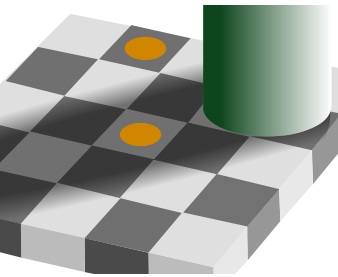Education
Visions Problems and Children’s Learning Development
Guest Blogger: Roxanne Peterson
The close link of vision and learning can be understood when we notice that majority of what goes in the classroom (about 80%, according to observers) involves observation. This includes board work, arts, and reading. That is why effective eye-health is necessary for children’s learning development.
Parents and teachers should always consider the possibility on an eye problem if children are facing difficulty in school, in things like reading, viewing the board, comprehending digits etc. Many times, the suspected problem turns out to be true, and reports suggest that 1 in 4 children in the US have eye problems that go undetected. Spectacles or contact lenses (such as the 1 day acuvue moist) can help these children to counter many of these problems.
Refractive Errors
A refractive error refers to the eye problem where light rays do not reflect from the cornea to the retina properly. This results in complications like nearsightedness, farsightedness, and astigmatism. Indentifying these problems in early childhood can be an effective first step. But you must know that these are not the only vision disorders that can affect the learning development of your children.
Learning problems not only depend on vision, but also on the ability of the brain to process the visual information. Learning-related problems describe purely the issues with eyesight that hinder your child’s academic progress.
Learning Disabilities
You should never mix vision problems that affect learning with learning disabilities. Learning disabilities include:
- Perceptual disability
- Brain injury
- Minimal brain dysfunction
- Dyslexia
- Development aphasia
None of these disorders are directly related to eyesight, or even hearing. These and other mental and emotional retardations are not vision impairments specifically. However, it cannot be ruled out that vision problems do contribute to learning problems, even if the child is not handicapped. It is also possible that a child trying to wrestle with his/her curriculum can have both vision and learning disabilities.
Always remember that monitoring children’s eye health is not a single man’s job. The teacher, the parent, and the doctor have to coordinate in the greatest possible way in order to correctly identify, and subsequently treat, vision impairments.
Vision Problems that Affect Learning
Before reading the list of learning-related vision problems, do consider the fact that eye problems involve the brain as well. Some disorders will be focused on visual input, but other may involve the function of the brain as well.
Refractive Problems
These affect the sharpness, or visual acuity, in the eyes. It is measured by an eye chart. Refractive problems include, as mentioned before, near and farsightedness and astigmatism. But it can also include less obvious errors known as higher-order aberrations. These problems cause low vision which is a sustained reduction in visual acuity that cannot be reversed by the usual glasses, lenses, and even surgery.
Functional Vision Issues
These refer to problems with the actions of the eyes and their related neurological function. Functional disorders vary in nature, such as:
- Blurred or double vision
- Straining
- Frequent headaches
- Convergence insufficiency
All these problems are obvious barriers to the child’s reading and learning abilities. If they are not able to read properly, then the brain will not process the information in an understandable way.
Perceptual Complications
These are problems that affect the ability to understand. Complications in this function will not allow students to identify, judge, and remember important information, slowing down (end even retarding) their academic journey.
Symptoms of Eye Problems that Affect Learning Development
These include:
- Frequent headaches
- Straining
- Double vision
- Crossed eyes that seem disjointed
- Resistance to reading and close work
- Low concentration and attention spans
- Dependence on one eye
- Constantly adjusting books or the desk when reading or writing
- Excessive rubbing/blinking the eyes
- Bumping into objects
- Confusing similar words and cutting out or repeating words
- Failure to follow a finger guide
- Not remembering what was read
- Reading slowly
If you see any of these symptoms in your child, contact an eye specialist immediately, as he/she can correctly diagnose an eye disease. If the disease is not severe and does not require surgery, you can you eye-glasses or contact lenses (like the 1 day acuvue moist).
About the Author
Roxanne Peterson is a freelance writer for various blogs and communities related to health. In her free time, she writes articles related to health, fitness, and anything that is related to them.




Great breakdown of the symptoms for eye problems that can affect learning development